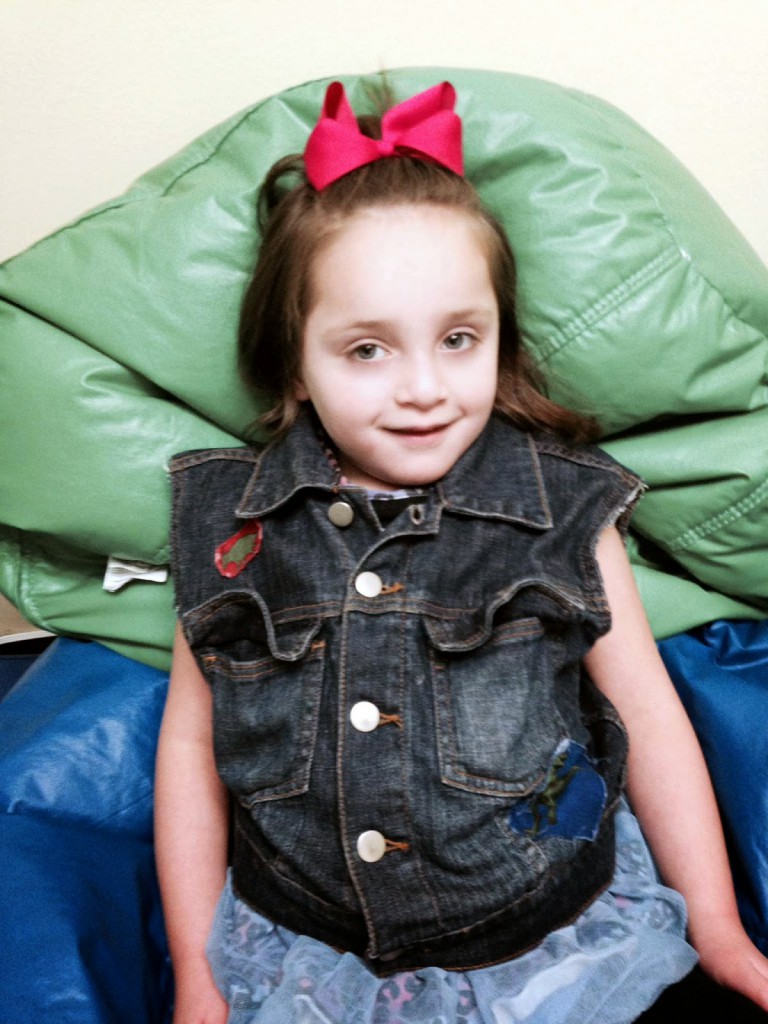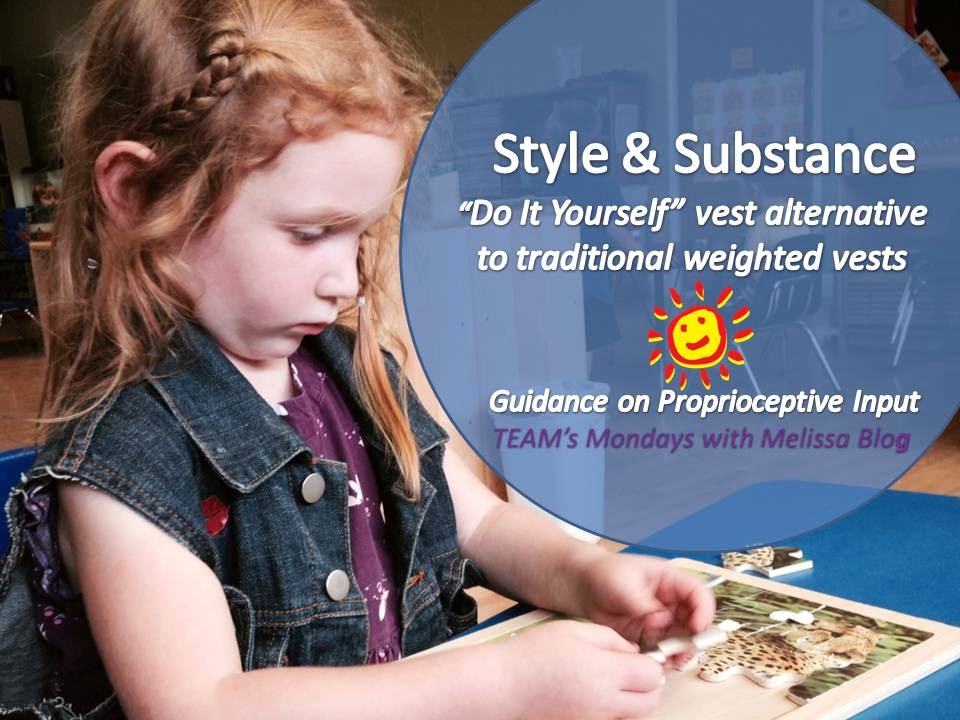Dear Melissa,
My 5-year-old just started kindergarten, and she is having a hard time sitting still during rug time. The teacher suggested that my daughter get a “weighted vest.” What is it; how do I get it; and how will it help?
I hate to burst the bubble of every educator or parent who has ever been to a basic sensory course, but multiple research studies have shown that weighted vests do not work. Now, are they bad? No. Every child is different. I still continue to use the weighted vest as a part of my sensory tool chest, and I have used it both in the clinic and in my own house. Unfortunately, I have to agree with the literature. I have never seen it be the “magic fairy dust cure” that we all wish for. On the flip side, does it hurt? NO! The literature also shows that children and parents alike generally enjoy this type of intervention and often continue to use the weighted vest. So it MUST have some benefit. I personally place the weighted vest in the column of “it can’t hurt!” So, what is the concept of the weighted vest all about?
The use of weighted or compression clothing is a form of sensory integration therapy. It is meant to provide deep pressure in order to calm the central nervous system. This type of sensory input is referred to as “proprioceptive input.” Think about when you have a new baby. You swaddle her tightly in blankets and snuggle her firmly to your body in order to calm her down when she is upset. It also helps her to relax and fall asleep. This form of proprioceptive input is working off of this same concept. Some people prefer to use weight such as weighted vests or weighted blankets. Others prefer to use compression garments such as UnderArmour or special medical compression garments.
Many people use these forms of proprioceptive input to help children with ADHD, Autism Spectrum Disorders, or Sensory Processing Disorders. Specifically, such devices can reduce anxiety, reduce fidgeting, reduce repetitive behaviors, improve attention to tasks, and help calm the body. Again, although the research does not conclusively demonstrate that a weighted vest will work, I am a firm believer that every child and every family is different. If a child wants to try a weighted vest, I say go for it! If you DO decide to give it a try, here are a few tips:

1. Don’t spend an arm and a leg! If possible, borrow a weighted vest or have your child use the vest during her occupational therapy sessions to see if it will even be tolerated. If you do decide to buy one, they can be found for around $130 on Amazon. That’s not cheap! I personally do NOT sew, but I have made my own vest easily by purchasing a jean jacket from a thrift store and cutting off the sleeves to make a vest. Then I simply used BB shot and fabric to hand stitch heavy (washable) bean bags. I put the bean bags into the pockets of the vest, and I stitched additional beanbags to the inside of the vest. Ideally, the vest should be 5-10% of the child’s body weight (based on backpack guidelines). You can also check out various designs on Pinterest. This is a much cheaper alternative to the commercial vest
2. There are no standard guidelines for the actual usage for a weighted vest. Many people try to use them all day. However, you will get more “bang for your buck” if the child wears it no more than an hour or two at a time (such as during  rug time or during quiet work time). The child should then remove it when she will gain sensory input through other means (such as during lunch, recess, and P.E.). If the child wears the vest all day, she will simply integrate it, and the potential effectiveness will wear off after the 1-2 hour period..
rug time or during quiet work time). The child should then remove it when she will gain sensory input through other means (such as during lunch, recess, and P.E.). If the child wears the vest all day, she will simply integrate it, and the potential effectiveness will wear off after the 1-2 hour period..
- If you do decide to use a weighted vest, please make it look as “normal” as possible. Most of the children I know who have weighted vests have a variety of jean jacket vests which look super cute. Avoid the vests with big trains or teddy bears on them. These stand out as a “special intervention.” It seems to be easier on the kiddos if the vests help them blend in rather than stand out even more.
Has a weighted vest or weighted blanket worked for your child? Did you find it to be a waste of money? Let’s make our own case studies! I would love to hear your feedback!
Also, if you have a question you would like me to address in my Weekly Blog,
send it to share@ChildrensTherapyTEAM.com
Resources:
LiveStrong.com: OT Guidelines for Weighted Vests
The use of weighted vestswith children with autism spectrum disorders and other disabilities, Journal of Autism and Developmental Disorders
Weighted blankets and sleep in autistic children—a randomized controlled trial — Pediatrics

